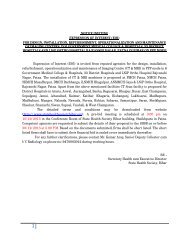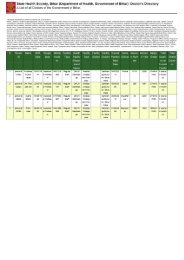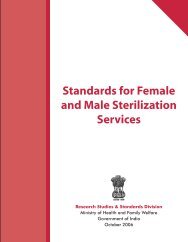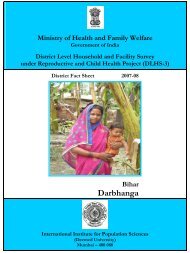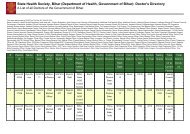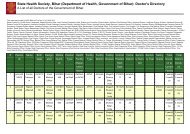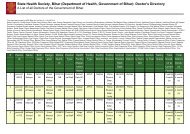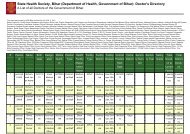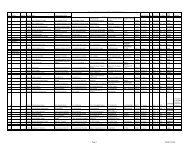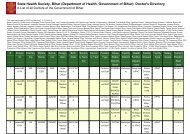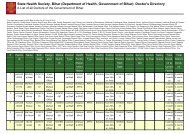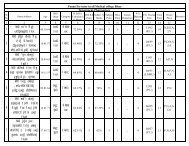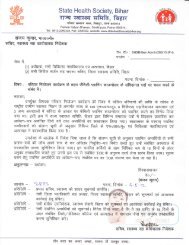District Health Action Plan - STATE HEALTH SOCIETY-----BIHAR
District Health Action Plan - STATE HEALTH SOCIETY-----BIHAR
District Health Action Plan - STATE HEALTH SOCIETY-----BIHAR
Create successful ePaper yourself
Turn your PDF publications into a flip-book with our unique Google optimized e-Paper software.
� Strategy 2: Involvement of Panchayat for motivation to patients Involvement of the<br />
Panchayat can be the paramount force for motivating patients to seek treatment and<br />
eradicating misconceptions attached to his disease. By orientation of health committees and<br />
community leaders, influential members or Panchayat members can be educated on the issue.<br />
� Strategy 3: BCC plan to mitigate stigma for increasing treatment responsiveness and<br />
eradicating fallacious beliefs associated with the disease there is need for behavior change in<br />
the community. This can be achieved by assessing the area-specific need for BCC and<br />
development of BCC materials for effective implementation.<br />
� Strategy 4: Reinforcement of service delivery for ensuring effective service delivery there<br />
should be provision of quality diagnosis and treatment. Intense and continuous monitoring for<br />
regular supply of drugs can strengthen the service delivery mechanism. In addition, by means<br />
of counseling it is necessary to ensure that treatment is completed.<br />
3 National Blindness Control Programme<br />
Blindness is a major public health problem in most developing countries where eye care<br />
facilities are still limited. Cataract is the leading cause accounting for 50% to 70 % of total<br />
blindness. India is the first country in the world to launch blindness prevention related<br />
programme as early as 1963 i.e. National programme for trachoma control. After few changes<br />
in the names, this programme was re-designated, since 1976 as "National programme for<br />
Control of Blindness" (NPCB)<br />
The National programme for control of blindness was launched in year 1976 with a goal for<br />
reduction in prevalence of blindness from 1.4 percent to 0.3 percent. The four-pronged<br />
strategy refers to strengthening service delivery, developing human resources for eye care,<br />
outreach activities and developing institutional capacities. All school children in the age<br />
group of 10-14 years should be screened for refractive errors. Percentage of children detected<br />
with refractive errors should be 5-7%.<br />
57 | P a g e D i s t r i c t H e a l t h A c t i o n P l a n 2 0 1 2 - 1 3 D H S , S a r a n



